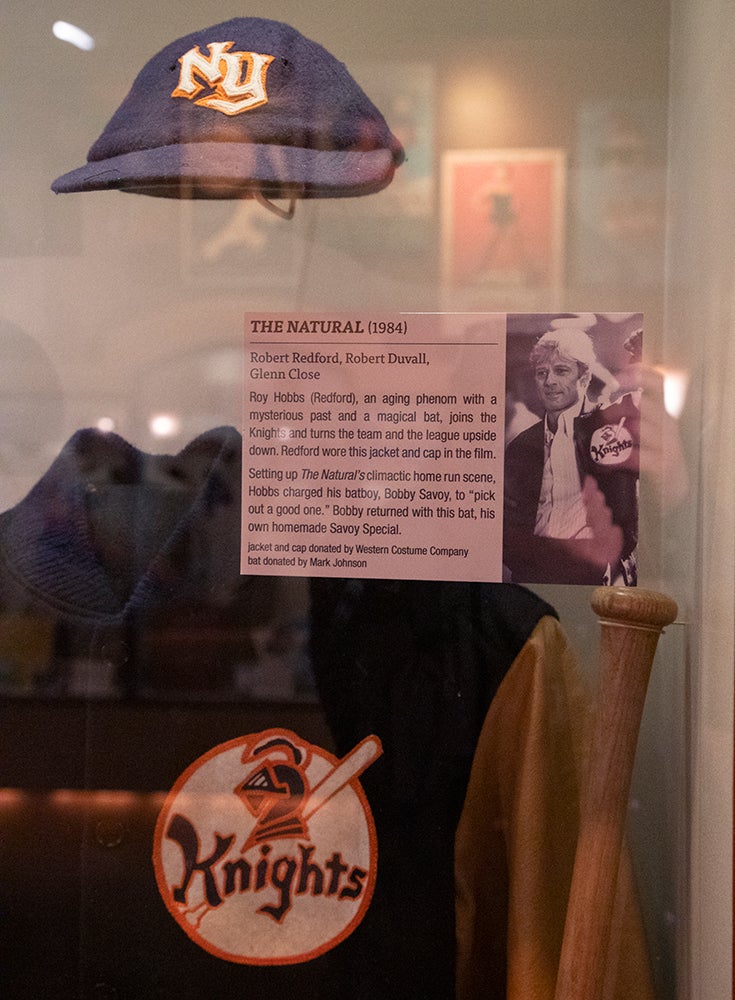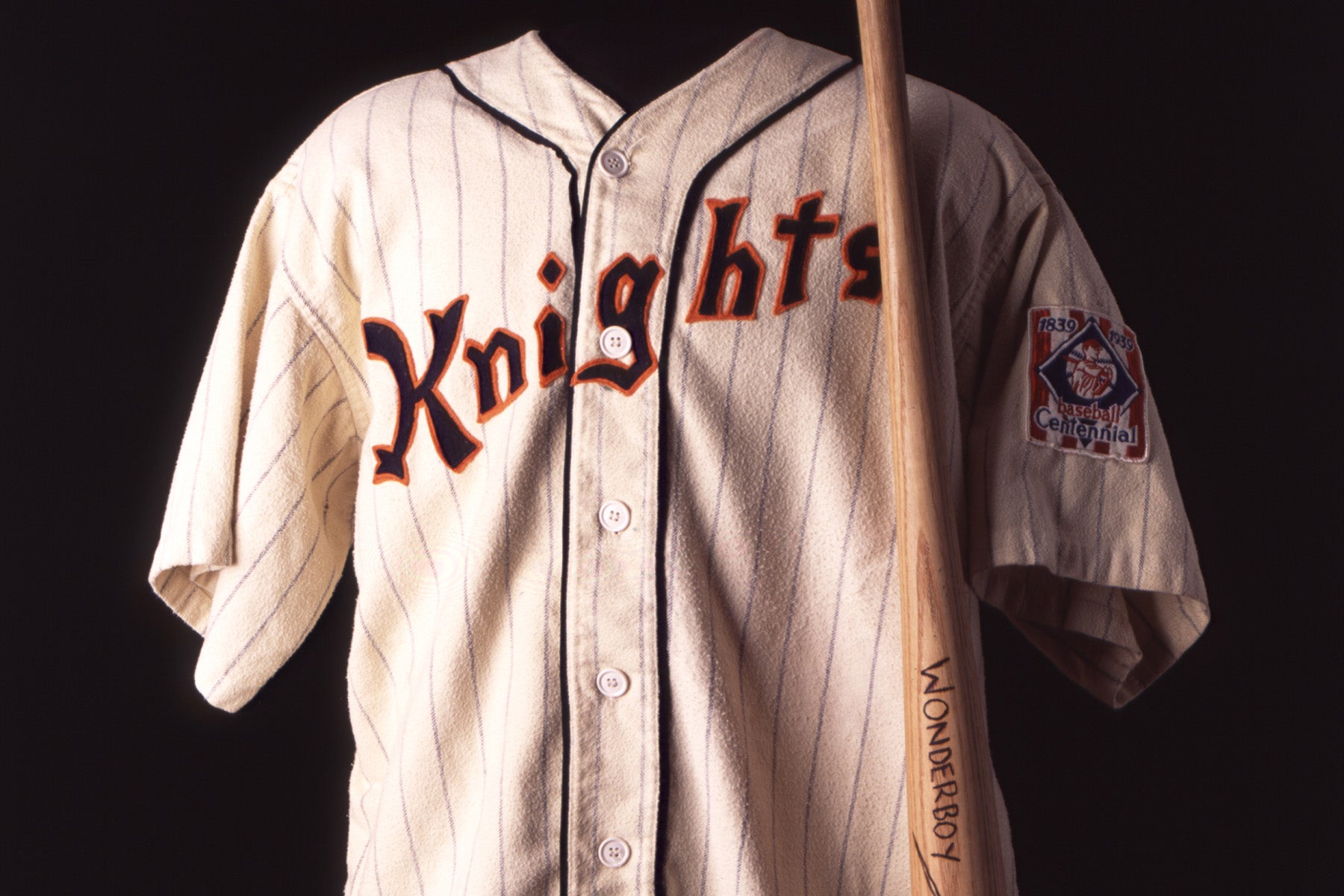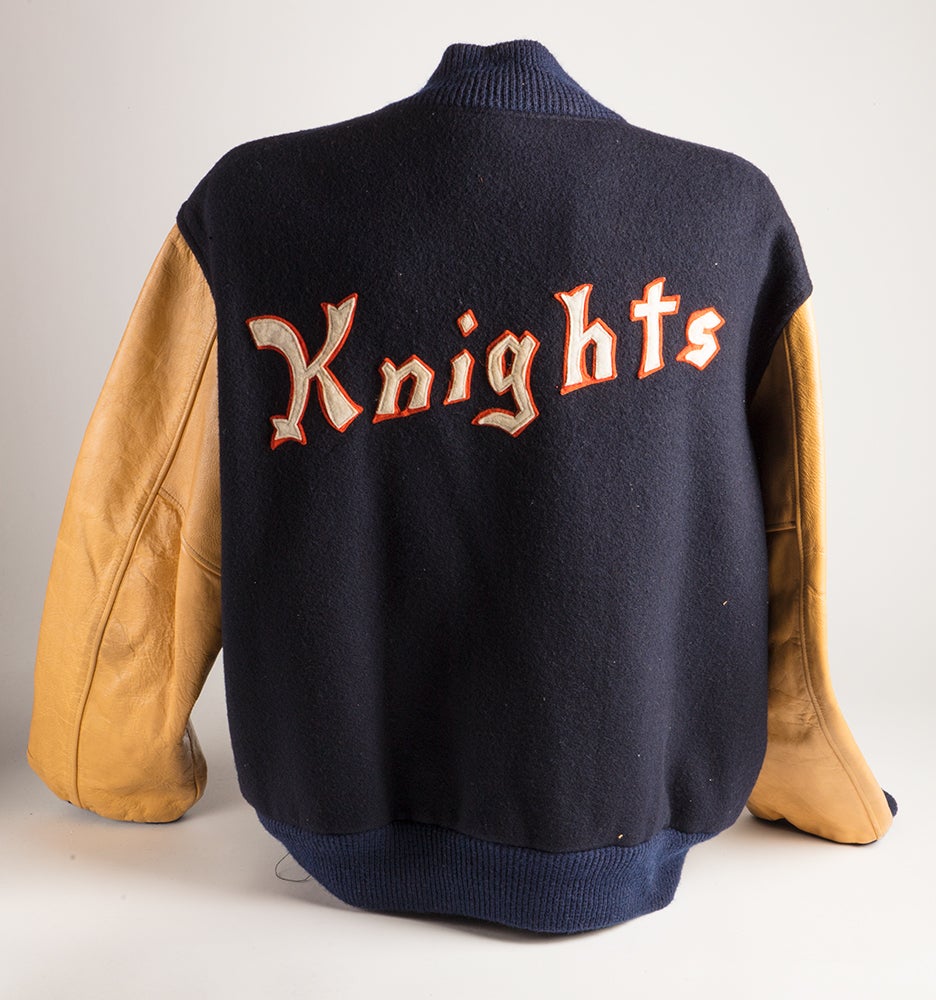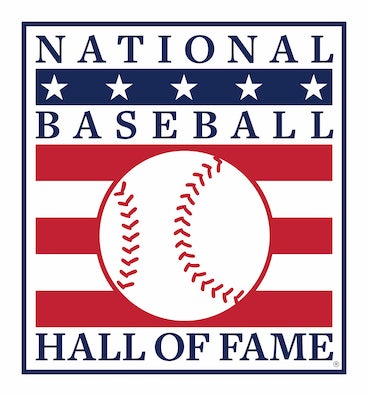Naturally good: Hall of Fame preserves artifacts from Redford's classic 1984 film
“Welcome to the majors.”
These are the words that every baseball player wants to hear. In the 1984 film “The Natural,” Roy Hobbs – played by Robert Redford – gets the good news from the clubhouse manager, who hands Hobbs a New York Knights baseball cap. Hobbs carefully tries it on for size and, in a moment of reflection, smiles slightly.
“The Natural,” an adaptation of Bernard Malamud’s 1952 novel, follows baseball prodigy Roy Hobbs, whose career is sidetracked when a sociopathic stalker shoots him. Directed by Barry Levinson and starring Redford, the story surrounds Hobbs’ efforts to resume his interrupted career many years later, carrying his homemade bat along the way. Much of the film’s appeal comes from its mix of nostalgia, mythology and history. Including such familiar American baseball experiences such as streaks and slumps, defeats and victories, scandals, greed and love for the game, the film continues to be a fan favorite.

Beyond these themes, of course, there are a number of other reasons for “The Natural’s” continued success. It was well made, and many parts were exceptional – it was nominated for four Academy Awards, including Glenn Close for Best Supporting Actress. Perhaps the biggest reason for the film’s success, however, is an old-fashioned one – the quality of the star in his lead role. Redford plays a great Roy Hobbs. And if Redford’s actions on the field seem, well, natural, there is a reason for that: Redford was good enough to earn a baseball scholarship to the University of Colorado.
“At one time,” Redford said, “I wanted to be a pro ballplayer. So it was very much in my DNA, and I always wanted to make a film about baseball.” Prior to filming “The Natural,” Redford even reviewed the hitting techniques of his favorite player, Ted Williams, and ensured that Hobbs wore Williams’ No. 9.
After the release of the film in 1984, producer Mark Johnson donated several props, including two bats and a trombone case. The better-known bat, evoking King Arthur’s Excalibur, is Wonderboy, hand-fashioned by Hobbs out of a tree that has been struck by lightning. Throughout the film, Hobbs carries it in the trombone case. At the film’s climax, Hobbs hits his mammoth, light-smashing home run with the third Johnson donation, another homemade bat, the Savoy Special.
Shortly after those donations, Hollywood’s Western Costume Company offered the complete Roy Hobbs uniform to the National Baseball Hall of Fame and Museum, including the Knights jersey, pants, warm-up jacket, cap, shoes and even the undershirt, all worn by Redford in the film. The company, now more than a century old, is one of the original motion picture firms in Hollywood, and has outfitted such classic films as “Gone With the Wind,” “The Sound of Music” and “West Side Story.” By the end of 1984, the combined generosity of Johnson and the Western Costume Co. created an impressive combination of movie props for the Hall’s collection.

A decade after those contributions, the National Baseball Hall of Fame and Museum opened Baseball at the Movies,” an exhibit that now features movie props from such films as “Damn Yankees,” “Bull Durham,” “Field of Dreams,” “A League of Their Own,” “61*” and “The Natural.” The artifacts on display from The Natural” change from time to time, and might include Hobbs’ uniform, socks and shoes, warm-up jacket, and the Wonderboy or Savoy Special bat. Having a variety of props to choose from allows the museum to rotate them on and off display or to use them elsewhere. When the Hall of Fame’s traveling exhibition “Baseball As America” toured throughout the United States from 2002 through 2008, the Wonderboy bat and Hobbs’ jersey were included as part of the exhibition. The items were chosen for their ability to illustrate the importance of America’s pastime in popular culture, including the movies.
Part of the authentic feel of “The Natural” came from the research that went into the creation of the baseball uniforms. Prior to filming, costume designer Bernie Pollack thoroughly investigated baseball uniforms from the 1930s. To supplement the black-and-white photographs of the era, Pollack sent researchers to the Hall of Fame to take their own photographs of the uniforms in the collection. Ted Spencer, then-Chief Curator of the Museum, remembered that when Pollack’s people came, they only had a few days to do research and “information was not as readily available as it is today.”
Pollack agreed.
“I talked to every baseball buff I could find and contacted all the National League teams for details about the old uniforms,” Pollack noted. “It was like putting together a jigsaw puzzle.” The end result for the New York Knights uniforms included a modification of the old New York Giants logo and the familiar pinstripes of the New York Yankees.

Many of “The Natural’s” scenes have become classics, particularly those that tap into baseball’s rich vein of myth and legend; the props that figure prominently in these scenes are among those offered to and accepted by the Museum. These scenes included Hobbs’ first batting practice with the Knights, where he adjusts his cap, swipes dirt away with his cleats, grips his Wonderboy bat, and clobbers the ball each time for towering home runs. In another scene, Hobbs gets his first appearance at the plate, clicks Wonderboy’s trombone case open, takes out his bat, and literally “knocks the cover off the ball.” A final dramatic scene remains one of the most memorable in all of baseball movie history. There, an ailing Hobbs swings the Savoy Special bat with all his might, smashing the ball into the outfield lights for a magnificent, slow-motion, game-ending home run to win the pennant.
Countless visitors, young and old, walk through the “Baseball at the Movies” exhibit each day, recalling the films they have seen and love as they gaze at the props displayed. “The Natural’s” exhibit case provides visitors with a unique and treasured experience.
“It is really neat to see a part of it in person. I like seeing it all together. All that is missing is the actor,” recounted a young female visitor. A father stated, with his son tagging along with him, that the display “brings back the movie – what you remember seeing in the movie, it comes back. When it comes to baseball and history, that’s what this whole Museum does.”
Bethany Girod was a curatorial intern in the Baseball Hall of Fame’s Frank and Peggy Steele Internship Program. This story previously appeared in the winter 2010 issue of Memories and Dreams.
Memories and Dreams
This story previously appeared in Memories and Dreams, the award-winning bimonthly magazine exclusively available to supporters of the Museum's Membership Program.
